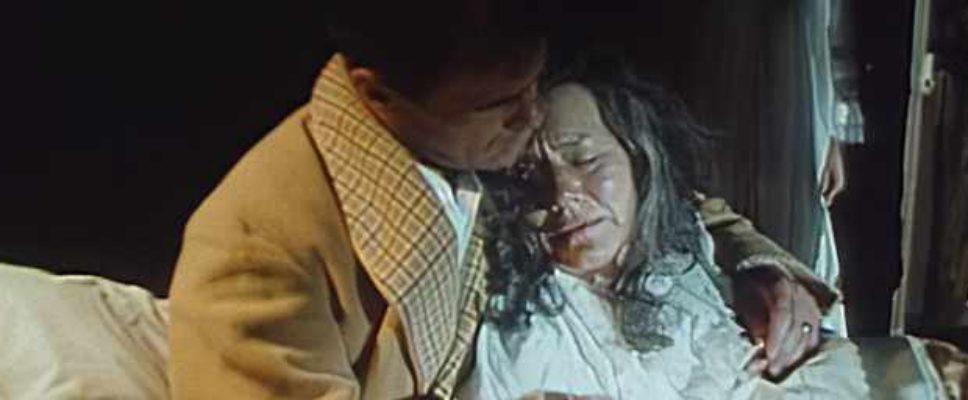Teresa Reviews The Mysterious Affair at Styles (1990)
Fidelity to text: 4 poison bottles.
![]() Some complexities are removed to streamline the story. You won’t notice them gone. What you will notice are the added scenes. We meet Hastings much earlier on, recuperating at a hospital and torturing himself with actual film footage of trench warfare. You’ll get more time with Poirot too, helping himself and other Belgian refugees acclimate to the weirdness of English country living.
Some complexities are removed to streamline the story. You won’t notice them gone. What you will notice are the added scenes. We meet Hastings much earlier on, recuperating at a hospital and torturing himself with actual film footage of trench warfare. You’ll get more time with Poirot too, helping himself and other Belgian refugees acclimate to the weirdness of English country living.
Quality of movie on its own: 4 poison bottles.
![]()
![]()
![]()
 If you’ve been watching Poirot in the order in which the films were released, then you’ll notice that everything suddenly looks different. Cars, trains, clothing, background characters, street vignettes, everything. Where’s that 1935 vibe?
If you’ve been watching Poirot in the order in which the films were released, then you’ll notice that everything suddenly looks different. Cars, trains, clothing, background characters, street vignettes, everything. Where’s that 1935 vibe?


This trip back in time should have been announced with a title card to alert the audience but it wasn’t. This is a mistake because you cannot guarantee the audience is familiar with the source material.
This film gives us more backstory about Captain Hastings when he was a mere lieutenant, fighting for the crown in the war to end all wars. Pay careful attention to the scenes in the convalescent hospital where he’s recuperating. Notice the array of injuries in the wounded soldiers. Those lads were tough to have survived that well considering their injuries. In 1917, handwashing was finally becoming recognized as a sensible thing to do and armies no longer lost half their men to poor sanitation. At least one of the background soldiers must have had terrible burns based on the bandages swathing his face.
Pay attention to the film the soldiers are watching. God only knows why someone (I’m assuming the producers paid close attention to actual convalescent hospital procedures of the time) thought it was a good idea to show shell-shocked veterans footage of more trench warfare. They’d left body parts and comrades behind in that nightmare. WWI was called the war to end all wars because it was so huge and so dreadful. In addition to the meat grinder the soldiers endured, there were civilian casualties on a massive scale, never seen before. Artillery that could launch shells up to fifteen miles away could be used in barrages on cities as well as enemy troops. That footage you’re watching along with Lt. Hastings is real.


Thus, we meet Hercule Poirot, Belgian refugee, and doing his best to become a British citizen.


When murder occurs at the Styles estate, Lt. Hastings knows who to call. Poirot arrives and immerses himself in English country house living. The Cavendish/Inglethorpe family are still doing very well for themselves despite their straitened circumstances. Make sure you notice how badly lit the interior of the house is. The family dines by candlelight because they have to. In 1917, even a wealthy family in the country would not have electricity. They’re too far away from the big city where electricity arrived first. And of course, there’s a war on.


Another piece of lost significance doesn’t have anything to do with the choices the producers made. Poirot gathers all the suspects together and delivers his summation of the crime. Normal and expected, right? Yet Agatha invented this classic mystery trope. Originally, she had tried writing a courtroom scene, with Poirot in the witness box. But her publisher didn’t like it, so she came up with this alternative method. Now, every mystery writer in the world uses her technique where the detective gathers everyone together to tell them whodunnit and why.
Watching this scene, I wondered again why Alfred Inglethorpe showed up as asked. He didn’t have to. There’s more (I think) of a reason given in the novel. Here, he shows up because he’s asked. Maybe he thought it was less suspicious. A line of dialog explaining why he agreed would have been helpful.
I enjoyed the show. You will too. But if you’re new to the series or to Agatha’s novels, understand that you’ll be jumping back twenty years in time to when Poirot and Hastings met for the second time on the grounds of Styles.




